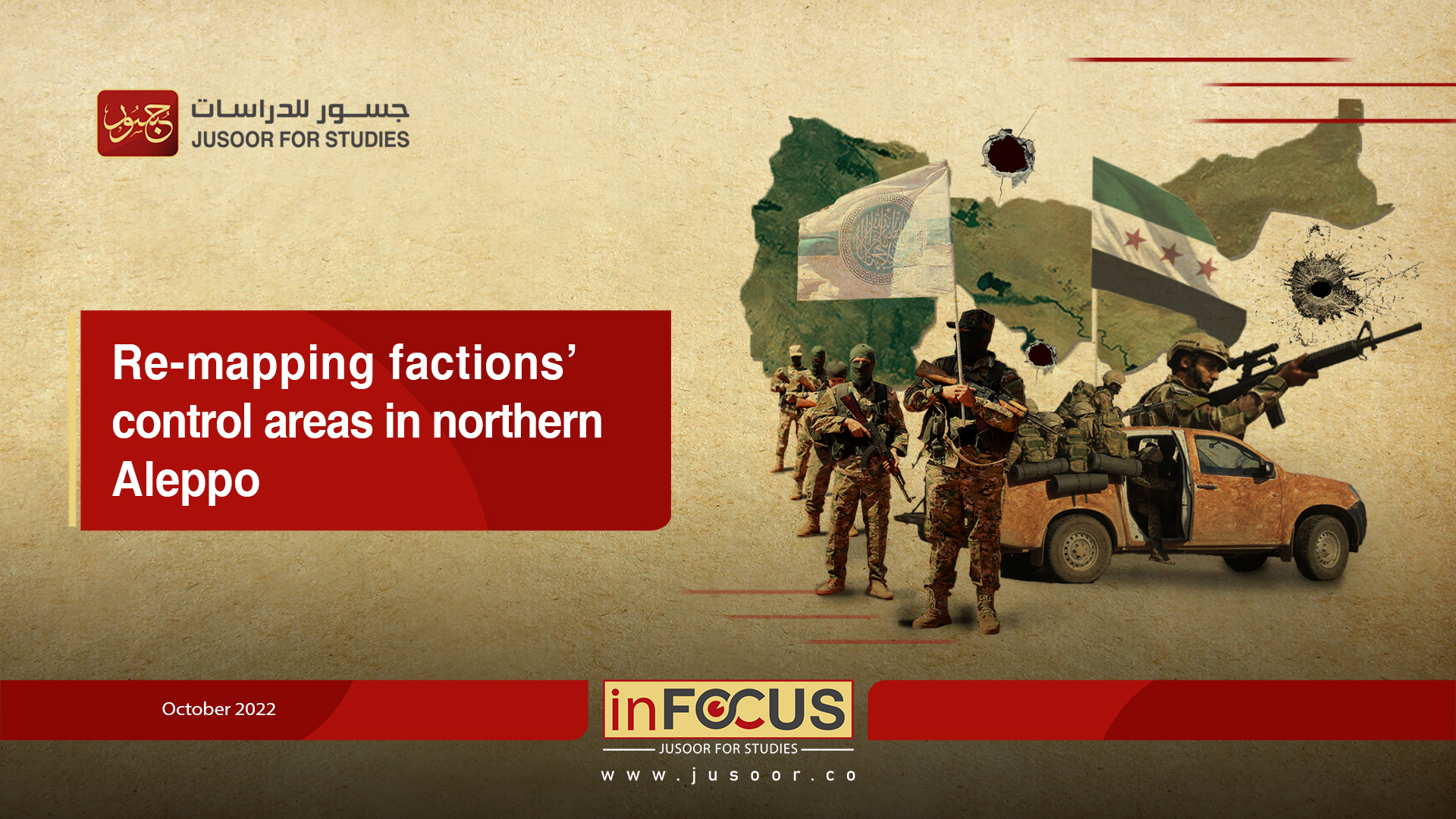Re-mapping factions’ control areas in northern Aleppo
Since October 11, 2022, the map of factions' control in northern Aleppo has begun to witness a major change in terms of alignments and the nature of geographical control, against the background of a new most violent wave of fighting in the region.
Both the Hamzah and Sultan Suleiman Shah divisions chose to take the side of Hay’at Tahrir al-Sham (HTS) in the face of the Third Corps, which could not keep the Liberation and Construction Movement allied with it; for many reasons, including the siege that was imposed on the Movement's main sites in the Hamam area, southwest of Afrin.
The Ahrar al-Sham Movement’s leadership, sided with the HTS, despite the fact that some of the Movement's sectors did not participate in the fighting, while the eastern sector operating in the northern Aleppo regions engaged in clashes alongside HTS. The remaining groups of the 32nd Division, however, maintained its alliance with the Third Corps as one of the Corps' components.
The position of "Revolutionaries for Liberation" witnessed a noticeable division, but its factions maintained a relative neutrality without aligning with one party over the other. It seems that it will replace the Third Corps, given that the former has advantages in terms of power and influence.
According to the new map, Faylaq al-Sham does not get the place it desires, not because HTS has bypassed it and benefited from the Faylaq's deployment sites in the recent fighting, but rather because it has nothing to do with the confrontation decision.
As a result, the armed confrontations led the Third Corps to lose control of Afrin completely. It also lost control of Kafr Jannah, one of the most important advanced defense lines for its main stronghold in the city of Azaz, which made it is likely to lose control of it as well.
The new wave of in-fighting and its consequences on the matter of redrawing the map of factions' control in northern Aleppo reflected a number of points; most notably:
• Hay’at Tahrir al-Sham has become part of the scene, in term of the faction's areas of control in northern Aleppo. Previously, however, HTS was not allowed to get into the area. This is, in fact, the major development.
• Turkey has become able to deal with the HTS just like any faction of the National Army's. This reflects to what extent this group's leadership made concessions in order to ensure greater chances for participating in power.
• The Third Corps and its components have had lesser chances, which is the biggest loss for this faction. This can also be seen as an indication about this faction's weakness to analyze or manage the map of factions' areas of control. Moreover, such a situation gives clues about the Third Corps lack of understanding of Turkey's position in dealing with the region.
• The chances of the Revolutionaries Liberation Movement have become greater. This prompts its factions to overcome the existing division to preserve the expected gains from the change in the map of influence, as it is the compromise solution that is supposed to bridge the gap between the Third Corps and HTS.
As a result, designating HTS as a terrorist group did not block redrawing the scene in term of the factions' control areas. Meanwhile, Turkey demonstrated a high ability to intervene in drawing the map of influence within the opposition areas, as the region will become more disciplined and ready to respond to any urgent military, political or security changes.
